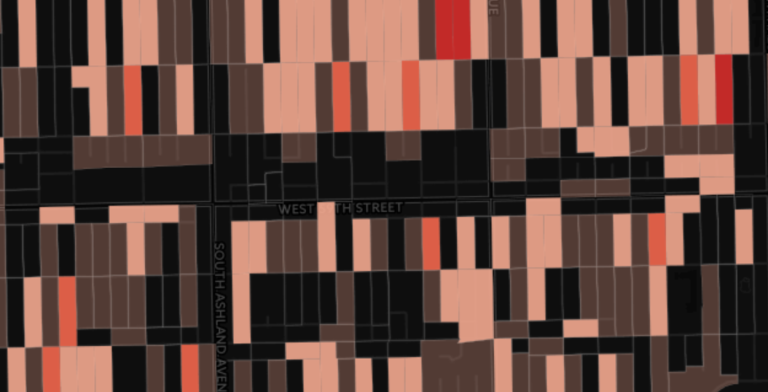
Dr. Daniel Cooper of Adler University and Dr. Ryan Lugalia-Hollon, a writer and strategist, drew on our work on Million Dollar Blocks to map the incarceration landscape in Chicago. They used data collected by the Chicago Justice Project and built on research methods developed by the Spatial Information Design Lab.






